There’s something wonderfully nostalgic about biting into a sun-ripened, homegrown strawberry. Sweet, juicy, and bursting with flavor, strawberries aren’t just a summer treat — they’re also one of the easiest and most rewarding fruits to grow in your own garden, balcony, or patio.
If you’ve ever wanted to enjoy your very own harvest of plump red berries, you’re in luck. With the right care, strawberry plants can thrive in containers, hanging baskets, raised beds, or garden rows. In this detailed guide, we’ll show you how to take care of strawberry plants and set yourself up for a sweet, homegrown harvest.
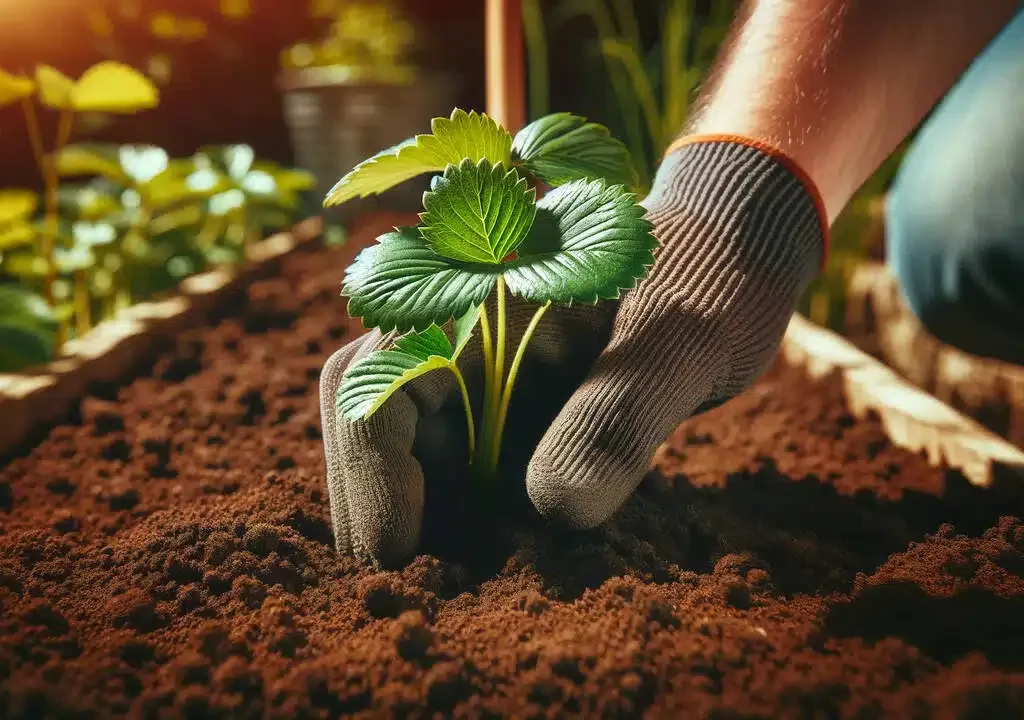
Why Grow Strawberries at Home?
Aside from the obvious reward of fresh, juicy berries, growing strawberries has several benefits:
- Fresh, organic produce at your fingertips
- A beautiful addition to gardens and balconies
- Fun and easy for beginners and kids
- Encourages pollinators like bees and butterflies
- Versatile growing options — ground, containers, or hanging baskets
Homegrown strawberries tend to be sweeter and more flavorful than store-bought varieties, as you can pick them at peak ripeness.
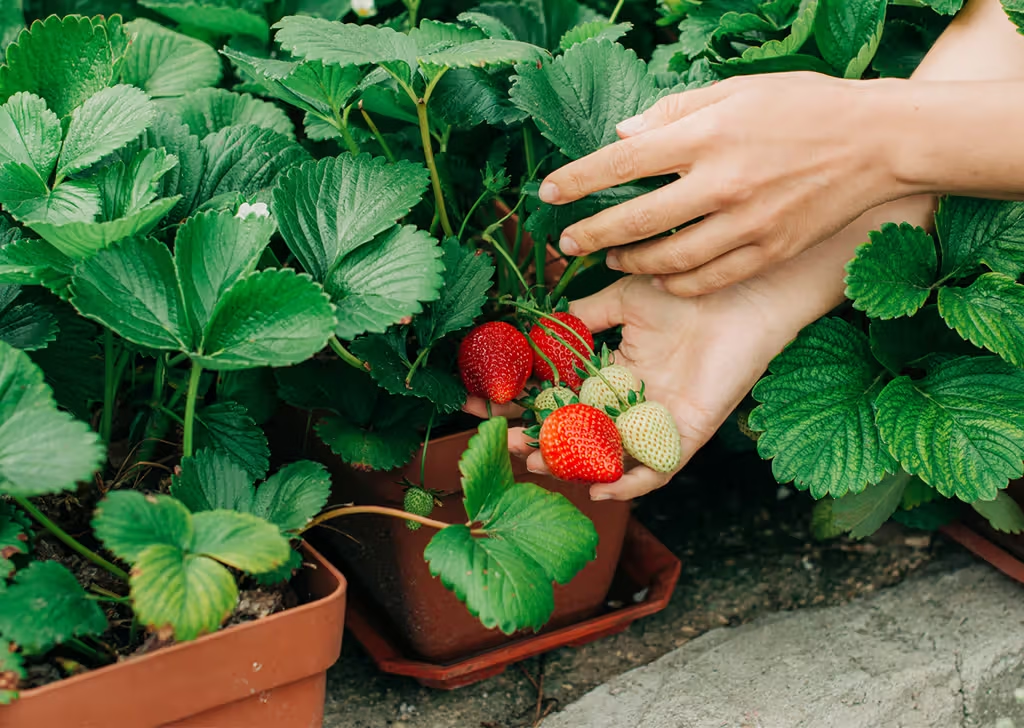
Types of Strawberry Plants
Before planting, it helps to know the different types of strawberry plants available:
- June-Bearing Strawberries: Produce a large, single crop in late spring to early summer. Great for big harvests.
- Ever-Bearing Strawberries: Yield two to three crops — in spring, summer, and fall.
- Day-Neutral Strawberries: Produce berries steadily throughout the growing season, regardless of day length.
Choose the variety that best suits your climate, space, and harvest preferences.
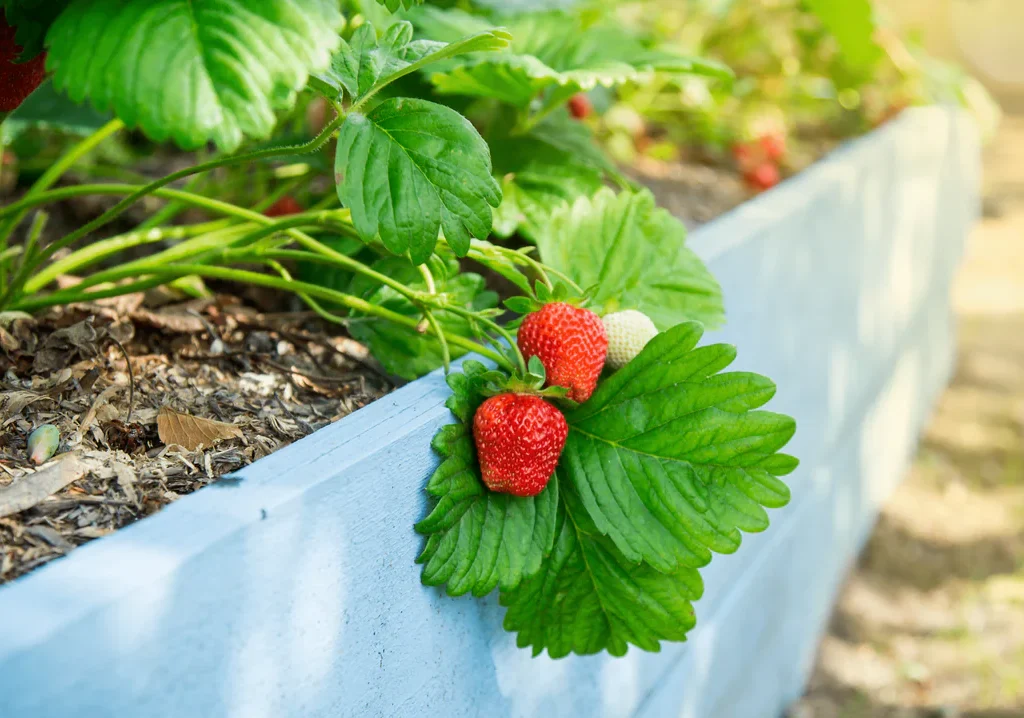
Where to Plant Strawberries
Strawberries love the sun and need at least 6-8 hours of direct sunlight daily to flourish and develop sweet fruits.
Ideal planting spots:
- Raised garden beds with well-draining soil
- Containers on sunny patios or balconies
- Hanging baskets for cascading beauty
- In-ground garden rows with good air circulation
Pro Tip: Avoid areas where tomatoes, peppers, or eggplants have been grown recently, as they share soil-borne diseases with strawberries.
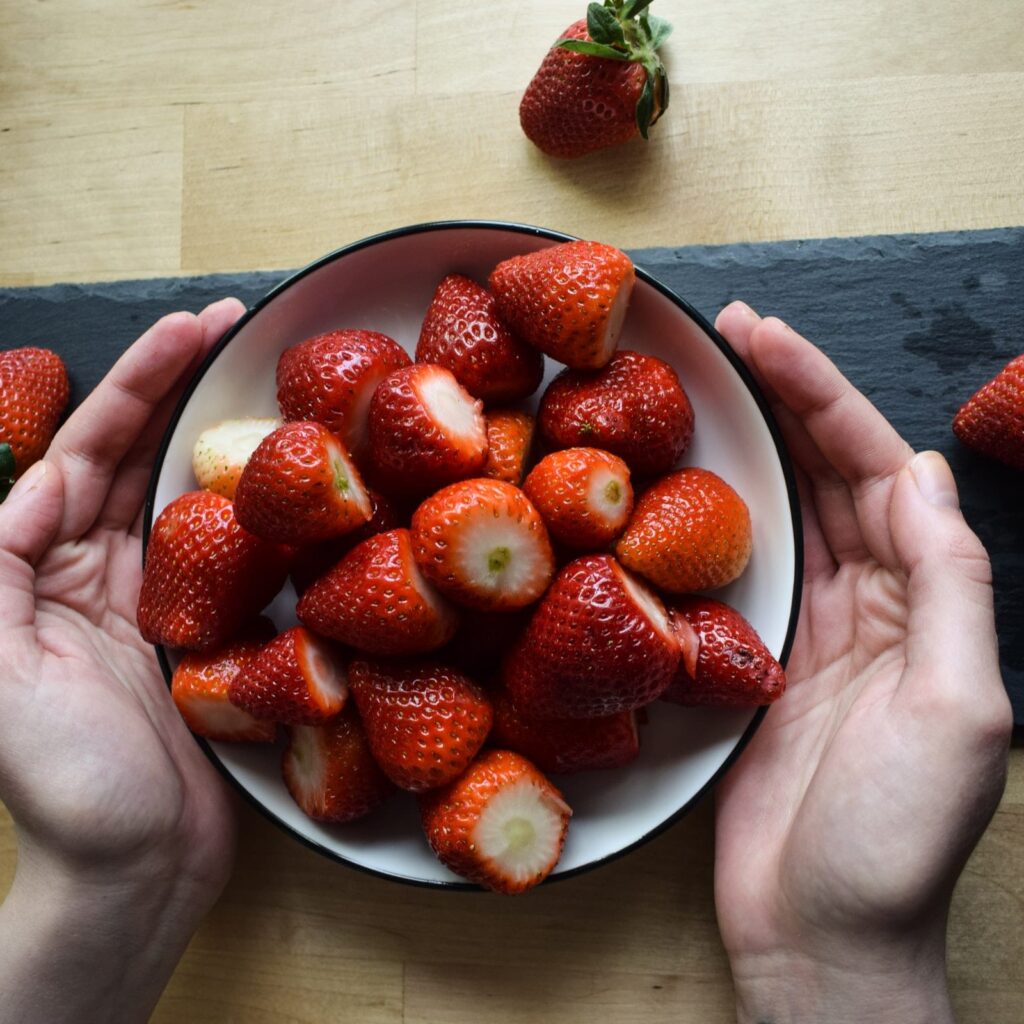
Preparing the Soil
Strawberries thrive in loose, fertile, and well-draining soil with a slightly acidic pH of 5.5 to 6.5.
Soil preparation tips:
- Mix in organic compost or aged manure before planting.
- Add a balanced, all-purpose fertilizer to enrich the soil.
- Ensure soil is loose enough for runners and roots to spread.
Raised beds or containers are great choices if your native soil is heavy clay or poorly draining.
How to Plant Strawberry Plants
Plant strawberries in early spring after the danger of frost has passed. Here’s how:
- Soak the roots of bare-root plants in water for about 30 minutes before planting.
- Dig holes wide enough to spread out the roots.
- Set the crown (where leaves meet the roots) level with the soil surface — not buried too deep or exposed.
- Space plants 12-18 inches apart to allow airflow and prevent disease.
- Water well after planting.
For container planting, choose a 6-8 inch deep container with drainage holes.
Watering Strawberry Plants
Strawberries need consistent moisture, especially while fruiting. However, overwatering can lead to rot and disease.
Watering tips:
- Water early in the morning to let foliage dry before evening.
- Keep soil evenly moist but not soggy.
- Use a drip irrigation system or a soaker hose for best results.
- Avoid overhead watering to prevent fungal diseases.
During hot, dry spells, check soil daily and water as needed.
Mulching and Weed Control
Mulching is crucial for healthy strawberry plants. It conserves moisture, suppresses weeds, and keeps berries clean.
Best mulch options:
- Straw (hence the name “strawberries!”)
- Pine needles
- Wood shavings
Apply a 2-3 inch layer around plants, being careful not to smother the crowns.
Weed regularly to prevent competition for nutrients and moisture.
Fertilizing for Healthy Growth
Strawberries are hungry plants, especially during fruiting. A balanced fertilizer ensures strong growth and abundant berries.
Fertilizer tips:
- Apply a 10-10-10 balanced fertilizer after planting.
- Feed plants again after the first harvest for continuous production.
- Avoid over-fertilizing, which leads to lush leaves but few berries.
Organic options like compost tea or fish emulsion are also excellent choices.
Pruning and Runners Management
Strawberry plants produce long stems called runners, which create new plants. While these are great for propagating, too many can sap energy from the parent plant.
Pruning tips:
- Pinch off early flowers in the first growing season to encourage strong root development.
- Remove most runners unless you want to propagate new plants.
- Prune old, damaged, or yellow leaves regularly.
After harvest, trim foliage back to about 1 inch above the crown to rejuvenate the plant.
Protecting Strawberries from Pests and Diseases
Common strawberry pests include aphids, slugs, snails, and birds.
Natural pest control tips:
- Use row covers to protect plants from insects and birds.
- Hand-pick slugs and snails early in the morning.
- Spray a mixture of neem oil and water for aphids.
- Keep the garden clean and debris-free.
Watch out for fungal diseases like gray mold and powdery mildew. Remove infected leaves promptly and ensure good air circulation.
Overwintering Strawberry Plants
In colder climates, strawberry plants need protection in winter.
Winter care tips:
- After the first hard frost, mulch plants with 4-6 inches of straw or pine needles.
- In containers, move pots to a sheltered, unheated space like a garage.
- Remove mulch in early spring as new growth appears.
Proper overwintering ensures healthy plants and a bountiful harvest next season.
How to Harvest Strawberries
The best part of growing strawberries is, of course, the harvest! Strawberries ripen quickly once they turn red.
Harvesting tips:
- Pick berries when fully red and firm.
- Harvest in the morning when temperatures are cool.
- Use scissors or pinch the stem just above the berry to avoid bruising.
- Check plants daily during peak season.
Freshly picked strawberries taste best the same day but can be refrigerated for up to 3 days.
Propagating New Strawberry Plants
You can easily propagate strawberries using runners or seeds.
Using runners:
- Let a healthy runner touch the soil near the parent plant.
- Pin it down with a small stone or U-shaped wire.
- Once rooted, cut from the parent plant and transplant.
From seeds: Start indoors 8 weeks before the last frost date, but this method takes longer and may not produce fruit the first year.
Final Thoughts
Growing strawberries at home is an incredibly rewarding experience. With their bright, cheerful blooms and irresistible fruit, strawberry plants are perfect for gardens big and small. The secret to a successful harvest lies in consistent care — from choosing the right location to watering, mulching, pruning, and protecting your plants.
By following these detailed tips on how to take care of strawberry plants, you’ll soon enjoy baskets of plump, sweet berries straight from your garden. And trust us — they taste so much better when they’re homegrown!

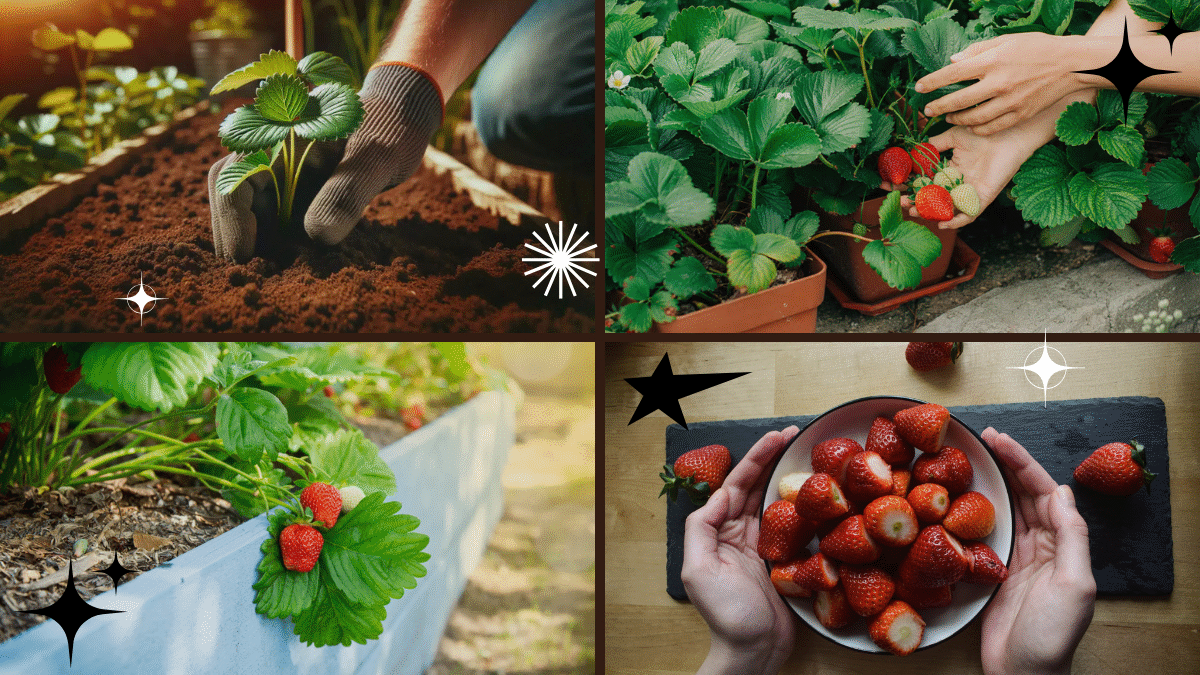



Leave A Comment